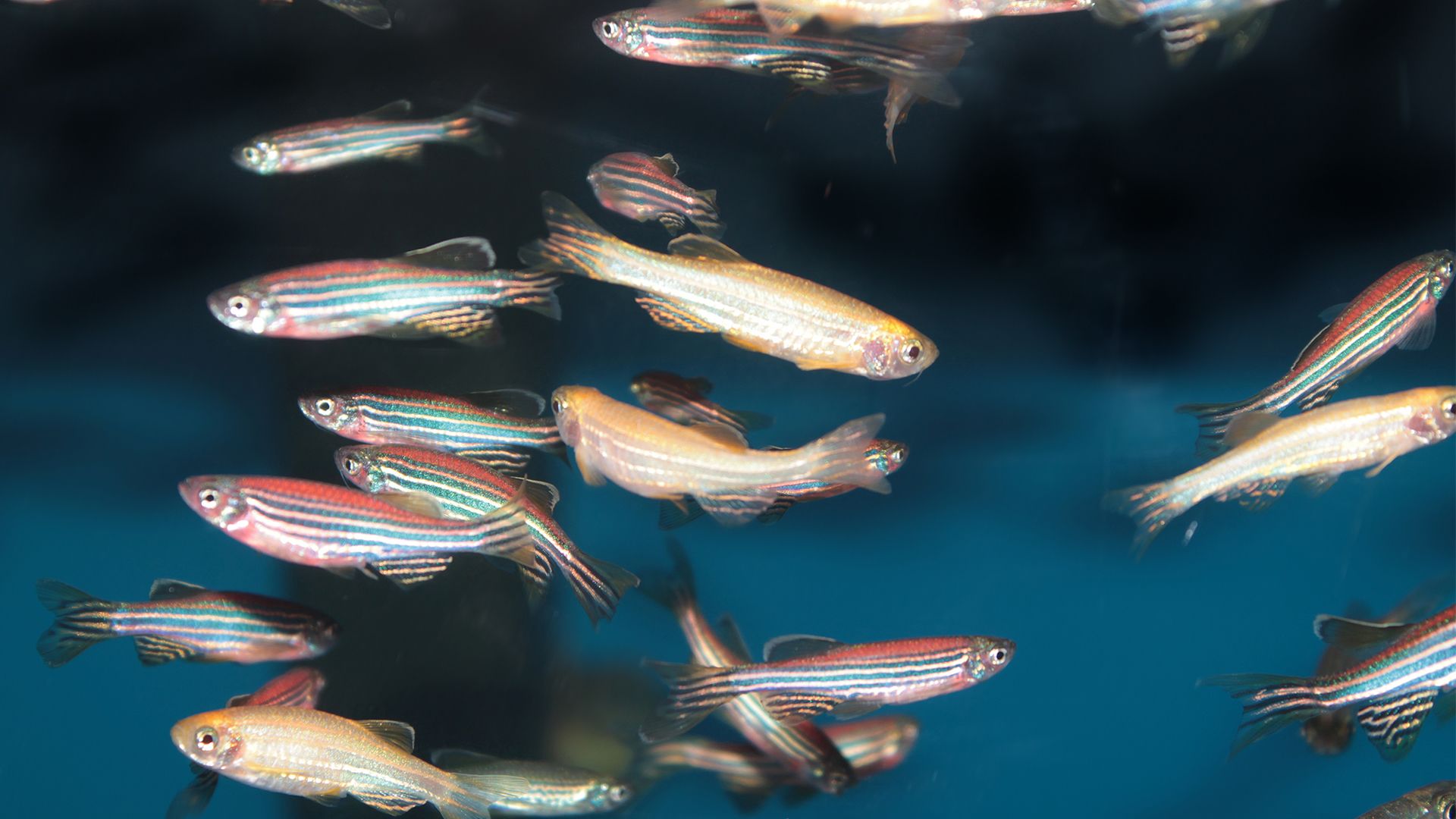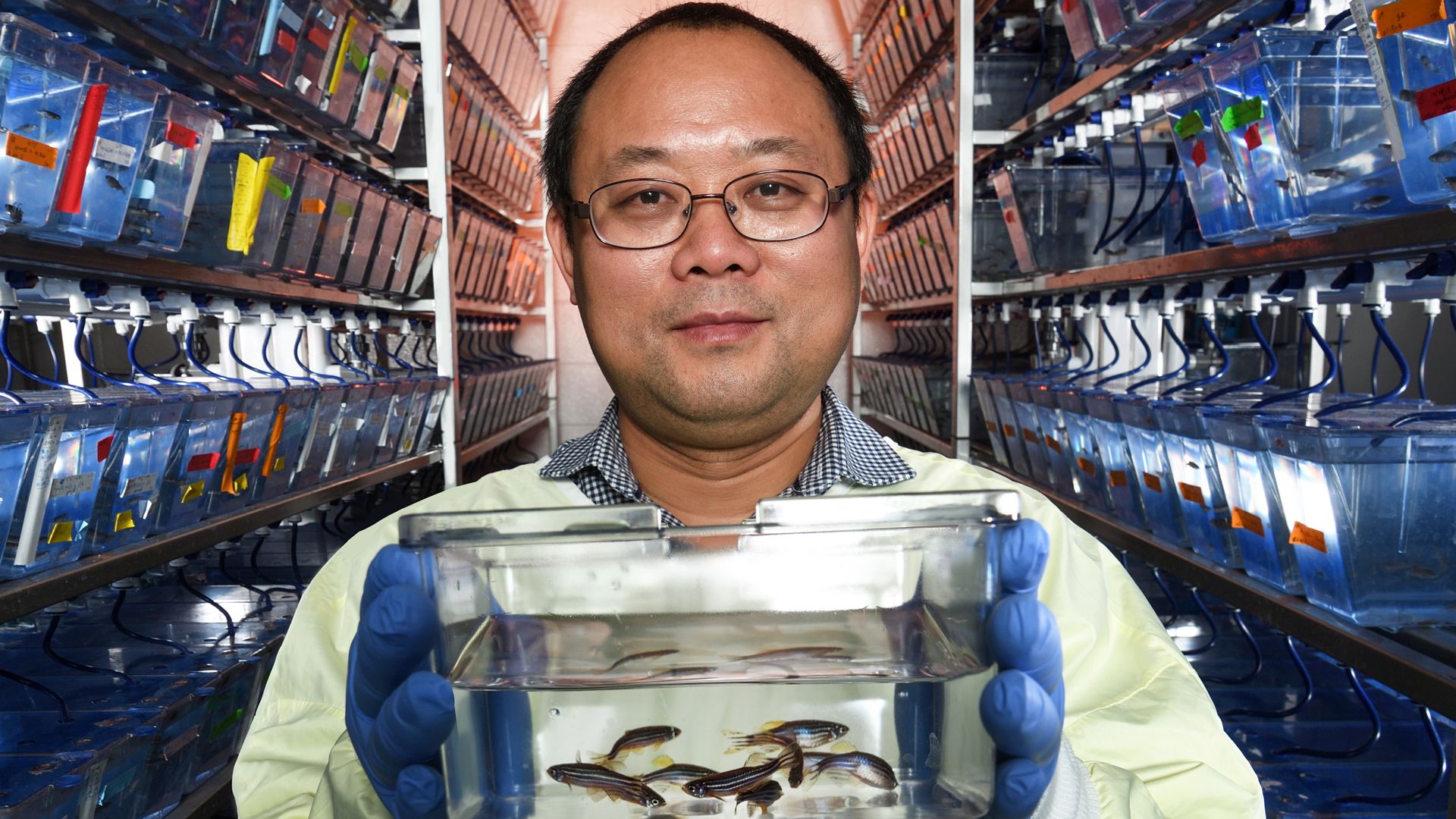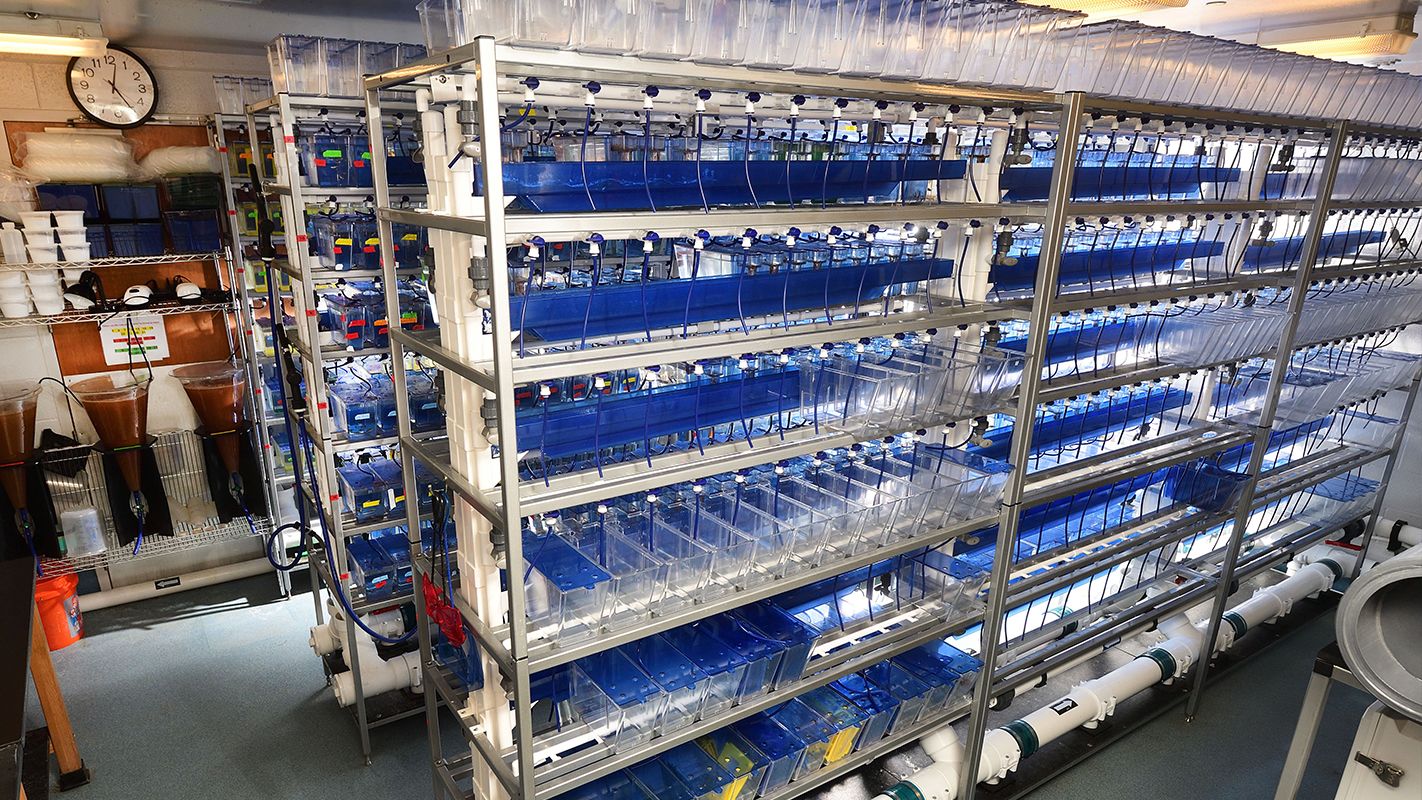Zebrafish
Mini-monsters of cardiac regeneration

After a heart attack, cardiac muscle cells die because they are deprived of blood and oxygen. In an adult human, those cells represent a dead end. They can’t change their minds about what kind of cell they’ve become.
In newborn babies, as well as in adult fish, the heart can regenerate after injury. Why can’t the human heart be more fishy? At Emory, researcher Jinhu Wang is seeking answers, which could guide the development of regenerative therapies.
“If we want to understand cardiac regeneration in mammals, we can look at it from the viewpoint of the fish,” says Wang, assistant professor of medicine.
Starting in the 1980s, a cadre of biologists began exploring zebrafish as a tool for studying genetics and development. Zebrafish embryos are transparent, making it easy to spot abnormalities. Particularly helpful for cardiology research: mutant embryos lacking active circulation are capable of surviving up to 5 days post fertilization. And zebrafish hearts are simpler than mammals’: theirs have just two chambers, while ours have four.
Wang decided to work with zebrafish as a postdoc at Duke with Kenneth Poss, who had shown in 2002 that zebrafish can recover after having substantial chunks of their heart muscles cut out.


Natural toys—and tools for discovery
Wang grew up in a small village in Hubei province in central China, surrounded by farms. “When I was a kid, I didn’t have man-made toys, but we did have many kinds of living organisms such as plants and small animals,” he says. “Observing and playing with them made me more interested to explore biology as a scientist.”

Wang's fish tank room at Emory's Rollins Research Center contains more than 1000 tanks and has an elaborate water recycling system.
Wang's fish tank room at Emory's Rollins Research Center contains more than 1000 tanks and has an elaborate water recycling system.
Wang’s fish room in the basement of Emory’s Rollins Research Center contains more than 1000 fish tanks, with different sizes of cage for various ages and an elaborate water recycling system. The adult fish eat brine shrimp that are stored in vats in a corner of the lab.
Wang reasons that studying organ regeneration will become more important with an aging population.
“I hope my research can help find better sources for cell therapy for heart failure and develop better methods for drug delivery in patient care,” he says.
No-touch heart attack
After performing resections on numerous fish hearts at Duke, Wang wanted to find an alternative method. Carrying out the surgeries on so many fish was taxing. “The next day, I couldn’t move my hand,” he says.
Zebrafish in a swimming performance test 7 days after 4-HT treatment.
Zebrafish in a swimming performance test 7 days after 4-HT treatment.
Wang developed a model for inducing a heart attack in fish without even touching them. It involves giving the fish an extra gene that is toxic to cardiac muscle cells. It is only turned on when the anticancer drug tamoxifen is introduced. In this video accompanying Wang’s 2011 paper in the journal Development, after a chemically induced heart attack, fish are sluggish and appear to gasp for breath. But a month later, they have recovered.
Advantages of regeneration
Scientists have known for decades that non-mammals/lower vertebrate organisms such as salamanders or frogs have a surprising regenerative capacity.
From the cardiologists’ point of view, the discovery that zebrafish hearts can accomplish similar feats put the phenomenon into a system that could be easily manipulated, with lots of readily available genetic tools, says Wang’s colleague Ahsan Husain.
Could regeneration have been an evolutionary advantage? A paper co-authored by Husain and colleague Nawazish Naqvi proposes that the ability to regenerate body parts or tissues originated as a byproduct of normal development and growth, but it has been selectively lost.
It’s easy to imagine that an animal would get benefits leading to a stronger chance of survival from being able to regrow a limb. If a predator chomps on a salamander’s leg, and the leg regrows, the animal can go on to reproduce. But after extensive injury to the heart, it’s more difficult to envision a scenario where the animal survives.
A LOT OF RESEARCH IN REGENERATIVE MEDICINE FOCUSES ON THE POTENTIAL OF STEM CELLS, WHICK HAVE NOT COMMITTED TO BECOME ONE TYPE OF TISSUE, SUCH AS BRAIN, SKIN, OR MUSCLE.
In a heart attack, the heart is flooded with immune cells that barge in and, over the long term, form scar tissue. That may disrupt the ability of the heart cells to regenerate. For humans and other mammals, there may have been evolutionary trade-offs, as more sophisticated immune systems and a finely-tuned blood clotting system developed.
In some mammals, we can still see the ability to regenerate in certain tissues—such as the skin of African spiny mice, and the periodic regrowth of antlers in deer and similar animals.
A lot of research in regenerative medicine focuses on the potential of stem cells, which have not committed to become one type of tissue, such as brain, skin, or muscle.
Wang stresses that the ability of zebrafish hearts to regenerate does not originate from stem cells. It comes from the regular tissues. The cells are induced to go back in time and multiply, although their capacity to regenerate may vary with the age of the animal, he says.

Outer layer of heart is critical
The 2018 movie Rampage, with Dwayne “The Rock” Johnson, introduced many non-scientists to the CRISPR/Cas9 gene editing technology, which Wang and his colleagues have begun to use.
Unlike the scientists in the movie, Wang’s lab is not producing giant monsters. They are making fish with fluorescent hearts. CRISPR/Cas9 allows them to work more efficiently, checking fish eggs for proper gene editing in just a few days.
In his work with Poss on zebrafish, Wang demonstrated the importance of the epicardium, the outer layer of the heart. In cardiac development, the epicardium nourishes the underlying muscle and gives rise to the coronary vasculature. If the epicardium is ablated, the ability of the cardiac muscle to regenerate is impaired.
The zebrafish epicardium displays an amazing ability to regenerate, coming back after 90 percent loss in just two weeks. This video, part of Wang’s 2015 Nature paper and used by permission, demonstrates that ability.
Zebrafish heart regeneration video.
Zebrafish heart regeneration video.
More recently, Wang has developed a system for culturing zebrafish hearts outside the body for one month. That’s much longer than any other “in vitro” culture system.
He is also investigating the regeneration of coronary blood vessels. The National Heart Lung and Blood Institute recently awarded Wang a grant for this research.
—Story by Quinn Eastman, design by Elizabeth Hautau Karp, photography by Jack Kearse, video by Damon Meharg, and animation by Kevin Rechin.
Zebrafish can regenerate damaged hearts, but other creatures can regenerate body parts as well. Watch a short animation about these special abilities.
Zebrafish can regenerate damaged hearts, but other creatures can regenerate body parts as well. Watch a short animation about these special abilities.

Want to know more?
Please visit Emory Health Digest Magazine, Emory News Center, and Emory University.


